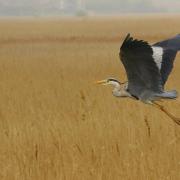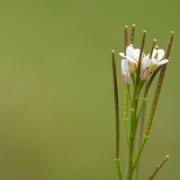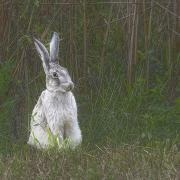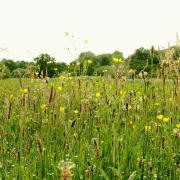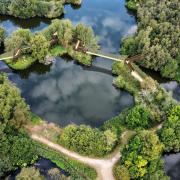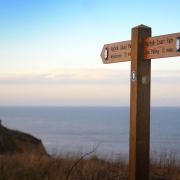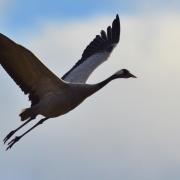Cook up some Random Acts of Wildness ideas, says Norfolk Wildlife Trust, and everyone wins

A random act of wildness is something we can all do.
In 2016 nearly 30,000 people and organisations nationally signed up to take part in 30 Days Wild across the country including over 2,000 schools involving 60,000 children. Between them, they carried out over 1.8 million random acts of wildness (RAW), exploring, learning about, and taking action for wildlife near them.
The 30 Days Wild campaign is supported by all the wildlife trusts nationally and our vision is that over the next ten years it will grow to inspire hundreds of thousands of people every year to make nature part of their life. Whether you live in the heart of the city or at the end of a rural farm track you can take part.
More than 500 people in Norfolk took part in a month of activity and this year with your help, we want to more than double that. So what’s it all about? This June, the UK’s 47 wildlife trusts are inviting as many people as possible to take one positive action every day to celebrate and enjoy wildlife and make it part of our everyday lives. The challenge, no matter where you are, or how busy your life, is to make space for nature in your life every day for a month.

A month may feel like a real commitment, but what is it really? They can take as little as seconds or just a few minutes. And, while lots of the ideas are great for children – there are plenty of suggestions for adults too. After all, nature makes you young at heart, so why should kids have all the fun?
We’ve been suggesting random acts of wildness for the past two years to everyone we know but how far can you take it?
At home and in your community

Some of the most wildlife-rich areas can actually be in our urban gardens and in the scrubby green spaces that surround us! Why not start a weekend project that helps wildlife and brings nature to you?
Turn your gardens and urban green spaces into hedgehog highways, create insect hotels or build bat boxes for our flying friends.
Why not plant some wildflowers and perennial plants or put up an insect or bug hotel - they provide certain insects with somewhere safe to hibernate in.
You can help stag beetles
There are two main requirements for stag beetles; dead wood and minimal disturbance. A log pile for stag beetles will also provide shelter for invertebrates and the best logs are in partial shade or partially buried (to stop the logs drying out). If you place them vertically, you can use this as a feeding table too: place seeds on top to attract birds. The log will attract other insects too; perfect food for the larvae and birds alike.
At work
Creating space for wildlife at work is a great way of helping wildlife be a part of our everyday lives but with our busy working routines, it may not always feel a priority. So a workplace needs wildlife champions to make it happen.
- If you’ve got open ground near your office, encourage your colleagues to create a wild space. A bland patch of lawn or paving could be transformed into beautiful plot to sit in or become a focus to grow herbs, including hyssop, sage, lavender and rosemary (all of which bees love).
- If you’re in an office higher off the ground, bird feeders will do just as nicely. Hang them out your window, or get a small table that will stick to the window.
- And what if you want to take it a step further? Plenty of local businesses work with us to get advice on how to make their green spaces more wildlife-friendly, so do get in touch.
Random acts of wildness help wildlife and wildlife helps you
Many studies have shown that spending time regularly in wild green environments improves your health and happiness. In 2015, the wildlife trusts worked with the University of Derby to evaluate the impact of the first 30 Days Wild on our participants.
The results were startling. People reported feeling significantly healthier and happier not just at the time, but months later after the challenge had finished.
And whatever random act of wildness you choose, let it be something that you might do beyond June. So if you want, go simple:
- Tickle your toes – squelch your toes in grass, sand or mud, or dangle them in a cool stream; how many wild landscapes can you feel through the soles of your feet?
- Admire the setting sun – long summer evenings are perfect for soaking up nature. Find a view to the west and watch the sky turn crimson, pink and golden.
- Create a wild work of art - use leaves, pine cones, feathers and twigs to create a wild picture. Leave it in the wild for someone else to find and enjoy.
Last year across the country 90% of the people who took part in random acts of wildness were not members of wildlife trusts and were not connected with what we do on a regular basis.
Please help us by encouraging your friends and family to take part or suggest that your local school takes on the challenge. To motivate you when you sign up (which is free) there are downloadable resources and a special ideas pack.
To sign up just visit our website in May and use the link to find ideas for random acts of wildness, and lots of inspiring suggestions for activities.
The pack includes a wall chart to track your progress and you will receive regular blasts of inspiration to help you.







